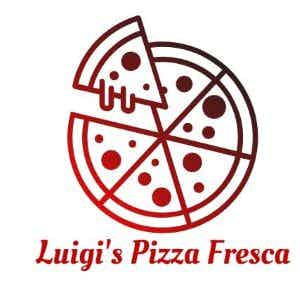Best Sicilian Pizza Near You
Keep Local Thriving. Every order on Slice supports small, local shops, their families, and the community.
Sicilian Pizza Near You
- J's PizzaClosed$5.15 Delivery5.0
- BJ's Pizzeria
 Closed$5.00 Delivery4.8
Closed$5.00 Delivery4.8 - Tomato Pie Pizza Joint
 Closed$2.99 Delivery4.7
Closed$2.99 Delivery4.7 - Pie Life Pizza
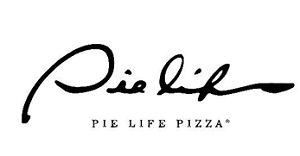 Closed$7.65 Delivery5.0
Closed$7.65 Delivery5.0 - The Kitchen Italian Cafe & Pizzeria
 Closed$3.00 Delivery4.9
Closed$3.00 Delivery4.9
- J's PizzaClosed$5.15 Delivery5.0
- BJ's Pizzeria
 Closed$5.00 Delivery4.8
Closed$5.00 Delivery4.8 - Tomato Pie Pizza Joint
 Closed$2.99 Delivery4.7
Closed$2.99 Delivery4.7 - Pie Life Pizza
 Closed$7.65 Delivery5.0
Closed$7.65 Delivery5.0 - The Kitchen Italian Cafe & Pizzeria
 Closed$3.00 Delivery4.9
Closed$3.00 Delivery4.9 - Pietro's
 Closed$4.65 Delivery4.8
Closed$4.65 Delivery4.8 - Barro's Pizza
 Closed$5.00 Delivery5.0
Closed$5.00 Delivery5.0 - SlicesClosed$7.40 Delivery4.5
- Brick Oven Pizzeria
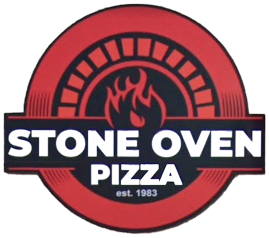 Closed$4.65 Delivery4.8
Closed$4.65 Delivery4.8 - Tomato Pie Pizza Joint
 Closed$4.50 Delivery4.9
Closed$4.50 Delivery4.9 - Big Mama's & Papa's Pizzeria
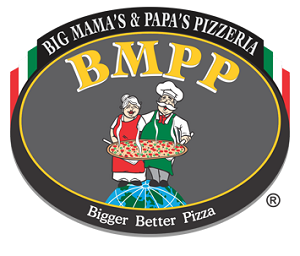 Closed$5.00 Delivery4.8
Closed$5.00 Delivery4.8 - Palermo Italian Restaurant
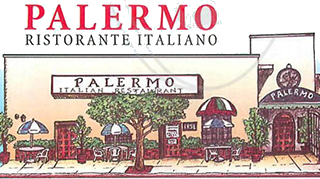 Closed$4.00 Delivery4.8
Closed$4.00 Delivery4.8 - Larry's Pizza
 Closed$5.50 - $12.50 Delivery4.8
Closed$5.50 - $12.50 Delivery4.8 - Pizza Man
 ClosedFree Delivery4.7
ClosedFree Delivery4.7 - Aroma Sunset Bar & Grill
 Closed$5.15 Delivery4.6
Closed$5.15 Delivery4.6
Sicilian Pizza in New York
- Gotta Getta Bagel & PizzaOpen Now$5.00 Delivery
- Heavenly Market & PizzaOpen Now$3.00 Delivery4.9
- 94 Corner Cafe
 Open NowFree Delivery4.8
Open NowFree Delivery4.8 - Lenz's Delicatessen
 Open NowFree Delivery4.9
Open NowFree Delivery4.9 - B&W Deli and Pizzeria
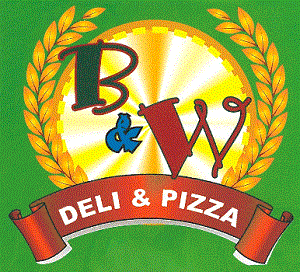 Open Now$5.50 Delivery4.8
Open Now$5.50 Delivery4.8
- Gotta Getta Bagel & PizzaOpen Now$5.00 Delivery
- Heavenly Market & PizzaOpen Now$3.00 Delivery4.9
- 94 Corner Cafe
 Open NowFree Delivery4.8
Open NowFree Delivery4.8 - Lenz's Delicatessen
 Open NowFree Delivery4.9
Open NowFree Delivery4.9 - B&W Deli and Pizzeria
 Open Now$5.50 Delivery4.8
Open Now$5.50 Delivery4.8 - Chelsea Bagel & Pizzeria
.jpg?auto=format&fit=max&q=10) Open Now$2.00 Delivery4.8
Open Now$2.00 Delivery4.8 - Giacomo's Pizza & RestaurantOpen NowFree Delivery4.5
- Pizza Healthy Choice Cafe
 Open Now$2.99 Delivery4.2
Open Now$2.99 Delivery4.2 - Healthy Choice Gourmet Deli Pizza
 Open Now$3.00 Delivery4.2
Open Now$3.00 Delivery4.2 - La Bella Vita RistoranteOpen Now$6.45 Delivery
- Marinara Pizza
 ClosedFree Delivery4.6
ClosedFree Delivery4.6 - Saba's Pizza
 Closed$2.99 - $7.00 Delivery4.9
Closed$2.99 - $7.00 Delivery4.9 - Fresco's Pizzeria
 Closed$2.99 Delivery5.0
Closed$2.99 Delivery5.0 - Il Mattone Tribeca
 ClosedFree Delivery5.0
ClosedFree Delivery5.0 - Brooklyn Pizza Masters
 Closed$2.99 Delivery5.0
Closed$2.99 Delivery5.0
Sicilian Pizza in Brooklyn
- Bella Pizza
 Open NowFree Delivery4.7
Open NowFree Delivery4.7 - Spiro's Cafe & Pizza
 Open NowFree Delivery4.8
Open NowFree Delivery4.8 - Oh Bagel Cafe
 Open Now$8.40 Delivery4.7
Open Now$8.40 Delivery4.7 - Mancini's Woodfired Pizza
 ClosedFree Delivery5.0
ClosedFree Delivery5.0 - Pizza Daddy
 ClosedFree Delivery4.8
ClosedFree Delivery4.8
- Bella Pizza
 Open NowFree Delivery4.7
Open NowFree Delivery4.7 - Spiro's Cafe & Pizza
 Open NowFree Delivery4.8
Open NowFree Delivery4.8 - Oh Bagel Cafe
 Open Now$8.40 Delivery4.7
Open Now$8.40 Delivery4.7 - Mancini's Woodfired Pizza
 ClosedFree Delivery5.0
ClosedFree Delivery5.0 - Pizza Daddy
 ClosedFree Delivery4.8
ClosedFree Delivery4.8 - Knapp Street Pizza
 Closed$1.00 Delivery4.9
Closed$1.00 Delivery4.9 - Pronto Pizza
 ClosedFree Delivery4.8
ClosedFree Delivery4.8 - Smith Street Pizza
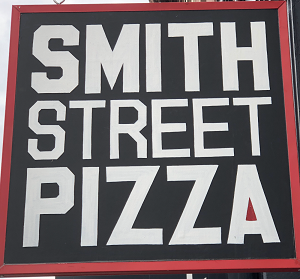 ClosedFree Delivery4.9
ClosedFree Delivery4.9 - Billy's Pizza & Pasta
.png?auto=format&fit=max&q=10) ClosedFree Delivery5.0
ClosedFree Delivery5.0 - Not Ray's Pizza
 ClosedFree Delivery4.8
ClosedFree Delivery4.8 - Antonio's Pizza
 Closed$1.99 Delivery4.9
Closed$1.99 Delivery4.9 - Brooklyn's Homeslice PizzeriaClosed$1.50 Delivery4.8
- Nonno's Pizza
 Closed$1.99 Delivery4.9
Closed$1.99 Delivery4.9 - Crown Heights PizzaClosed$3.00 Delivery5.0
- Prospect Pizza
 ClosedFree Delivery4.8
ClosedFree Delivery4.8
Sicilian Pizza in Philadelphia
- New Pizza Villa
 Open Now$3.00 Delivery4.9
Open Now$3.00 Delivery4.9 - Randazzo's Pizza
 Closed$2.99 Delivery4.8
Closed$2.99 Delivery4.8 - Mario's Pizza
 Closed$2.00 Delivery4.9
Closed$2.00 Delivery4.9 - Montesini PizzaClosed$2.00 Delivery4.8
- Luigi's Pizza FrescaClosed$2.50 Delivery4.9
- New Pizza Villa
 Open Now$3.00 Delivery4.9
Open Now$3.00 Delivery4.9 - Randazzo's Pizza
 Closed$2.99 Delivery4.8
Closed$2.99 Delivery4.8 - Mario's Pizza
 Closed$2.00 Delivery4.9
Closed$2.00 Delivery4.9 - Montesini PizzaClosed$2.00 Delivery4.8
- Luigi's Pizza FrescaClosed$2.50 Delivery4.9
- EVO Brick Oven Pizza
 Closed$3.00 Delivery5.0
Closed$3.00 Delivery5.0 - Ernie's Pizza & Restaurant
 Closed$3.00 Delivery4.9
Closed$3.00 Delivery4.9 - Baby Boss Pizza & Grill
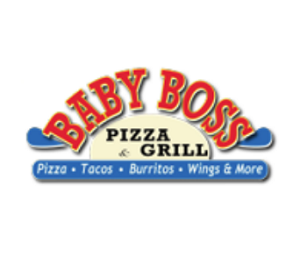 Closed$2.00 Delivery5.0
Closed$2.00 Delivery5.0 - Franco's Pizza
 Closed$4.99 Delivery5.0
Closed$4.99 Delivery5.0 - Pizzeria Pesto
 Closed$2.00 Delivery5.0
Closed$2.00 Delivery5.0 - Little Italy Pizza & Trattoria
 Closed$2.00 Delivery5.0
Closed$2.00 Delivery5.0 - Shef's Pizza
 Closed$2.50 - $7.00 Delivery4.9
Closed$2.50 - $7.00 Delivery4.9 - Fino's PizzaClosed$4.95 Delivery5.0
- Angelo's Pizzeria & Family Restaurant
 Closed$3.00 Delivery5.0
Closed$3.00 Delivery5.0 - Giovani's Bar & Grill
 ClosedFree Delivery5.0
ClosedFree Delivery5.0
Sicilian Pizza in Bronx
- Patricia's Pizza of Tremont
 Closed$3.00 Delivery4.9
Closed$3.00 Delivery4.9 - Frank's PizzaClosedFree Delivery4.9
- D'Angelo's Pizza & Pasta
 ClosedFree Delivery4.8
ClosedFree Delivery4.8 - Loretta's Pizza
 ClosedFree Delivery4.9
ClosedFree Delivery4.9 - Cestra's PizzaClosed$2.00 Delivery5.0
- Patricia's Pizza of Tremont
 Closed$3.00 Delivery4.9
Closed$3.00 Delivery4.9 - Frank's PizzaClosedFree Delivery4.9
- D'Angelo's Pizza & Pasta
 ClosedFree Delivery4.8
ClosedFree Delivery4.8 - Loretta's Pizza
 ClosedFree Delivery4.9
ClosedFree Delivery4.9 - Cestra's PizzaClosed$2.00 Delivery5.0
- Jerome's Pizza & PastaClosed$1.50 Delivery4.9
- Circle Pizza
 ClosedFree Delivery4.8
ClosedFree Delivery4.8 - Marianne's Pizza CafeClosedFree Delivery4.7
- Crosby Pizza Stop
 ClosedFree Delivery5.0
ClosedFree Delivery5.0 - Mario's Pizza II
 ClosedFree Delivery4.7
ClosedFree Delivery4.7 - Addeo's Riverdale Pizzeria
 ClosedFree Delivery4.9
ClosedFree Delivery4.9 - Mario's Pizza & Italian Homemade Cuisine
 ClosedFree Delivery4.7
ClosedFree Delivery4.7 - Arturo's Pizza
 ClosedFree Delivery4.6
ClosedFree Delivery4.6 - Mario's Pizza & Homemade CuisineClosed$1.00 Delivery5.0
- Gio's Pizza
 Closed$1.99 Delivery4.1
Closed$1.99 Delivery4.1
Sicilian Pizza in Staten Island
- Pizza Mia - Rosebank
 ClosedFree Delivery4.7
ClosedFree Delivery4.7 - Rossville Pizza
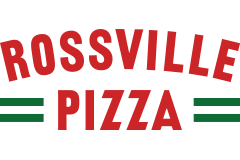 ClosedFree Delivery5.0
ClosedFree Delivery5.0 - Village Maria Pizza IIClosed$1.00 Delivery5.0
- Rosebank Pizza
 ClosedFree Delivery5.0
ClosedFree Delivery5.0 - Ambrosino's Pizzeria (Arden Ave)
.png?auto=format&fit=max&q=10) Closed$1.00 Delivery5.0
Closed$1.00 Delivery5.0
- Pizza Mia - Rosebank
 ClosedFree Delivery4.7
ClosedFree Delivery4.7 - Rossville Pizza
 ClosedFree Delivery5.0
ClosedFree Delivery5.0 - Village Maria Pizza IIClosed$1.00 Delivery5.0
- Rosebank Pizza
 ClosedFree Delivery5.0
ClosedFree Delivery5.0 - Ambrosino's Pizzeria (Arden Ave)
.png?auto=format&fit=max&q=10) Closed$1.00 Delivery5.0
Closed$1.00 Delivery5.0 - Brooklyn's Finest Pizza
 ClosedFree Delivery4.9
ClosedFree Delivery4.9 - Amici Brick Oven Pizza
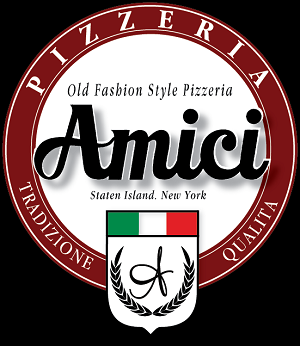 Closed$2.00 Delivery5.0
Closed$2.00 Delivery5.0 - Torino Pizza Cafe
 ClosedFree Delivery4.9
ClosedFree Delivery4.9 - Mama Rosaria's Pizza & Restaurant
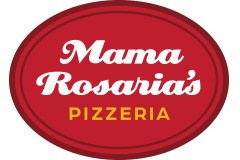 Closed$1.00 Delivery4.9
Closed$1.00 Delivery4.9 - Kingdom Pizza
.png?auto=format&fit=max&q=10) ClosedFree Delivery5.0
ClosedFree Delivery5.0 - Il Forno Pizzeria
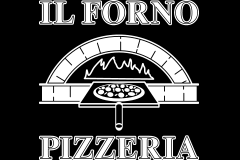 ClosedFree Delivery4.9
ClosedFree Delivery4.9 - Bravo Pizza
 ClosedFree Delivery4.9
ClosedFree Delivery4.9 - Prime Pizza Kitchen
 ClosedFree Delivery5.0
ClosedFree Delivery5.0 - Royal PizzaClosedFree Delivery5.0
- Ambrosino's Pizzeria & Restaurant
 Closed$1.00 Delivery5.0
Closed$1.00 Delivery5.0
What is a Sicilian Pizza?
A Sicilian pizza, also known as sfincione, is a delicious pizza style that originated in Sicily, Italy. Characterized by its thick dough and unique toppings, the Sicilian pizza is a staple Italian pie known all around the world. As avid pizza lovers, one of our favorite things is delving deep into the history of pizza pies and really understanding their origins, varieties, and more, and today it's the Sicilian pie's turn! If you'd like to learn more about this fan-favorite pie, join us on our journey of exploration! We'll be covering history, pizza toppings, ways of preparation, and much more. However, if you're only here to get a slice of sicilian pizza, don't worry! We understand that not everybody wants to learn about a dish, some people just want to enjoy it! If you're one of them, head straight to the bottom of this page and check out our list of delicious restaurants.
Why is it Called Sicilian Pizza?
The name of this famous pizza style comes from its place of origin - the island of Sicily in sunny Italy. Located in the southern part of the country, Sicily has been a culinary melting pot for centuries. Through its rich history, the island has collected influences from cultures all around the world, making it develop truly unique tastes. In classic Sicilian cuisine, you can find the rich flavors of the middle east, the refined sapor of Spanish cuisine, and even the exciting novelty of Nordic cooking! Sounds interesting and unique, doesn't it? Well, amidst this mix of cultural influence and inspiration the pizza recipe for what we know as Sicilian pizza was born! Invented in the 19th century, the Sicilian pizza was the most popular pizza on the island for years. Once travel became more popular in later years, the pizza recipe reached North America. However, it did so in a bit of an altered state, with a thicker pizza crust and a rectangular shape. Americans really took a liking to this dish, so they kept experimenting with it until they developed the staple we know and love today!
What is Different About Sicilian Pizza?
The most notable difference between a sicilian pizza and any other type is the dough. When stretching the dough, chefs making Sicilian pies form the dough ball into a square. As we all know, pizzas are usually round, so this square shape is the first giveaway of a Sicilian pizza pie. In addition, the pizza dough recipe for a Sicilian pie is also fairly different than that of a regular pie. Needing twice as much bread flour and three times more active dry yeast, this dough is thick and heavy. When spread on a baking sheet and baked in a preheated oven, this dough gets golden brown and crunchy, yet spongey! Furthermore, the Sicilian pizza toppings also differ from regular pizza pies. Typical toppings for a regular round pie may include things like pepperoni, mushrooms, ham, and the likes. On a Sicilian pizza, however, the toppings are a bit different. Traditionally, this type of pie is topped with a layer of strong cheese followed by anchovies, onions, and herbs. The cheese traditionally used is caciovallo, a heavy sheep's milk product. A sicilian pie can also feature olive oil and tomato sauce as a base.
Is Sicilian Pizza Healthier?
When compared to a pizza like a Napoletana, Sicilian pizza can actually be higher in calories. As we mentioned before, the dough recipe for this pie requires more ingredients, making it higher in calories. Furthermore, when you consider the heaviness of the cheese and the anchovies, a Sicilian pie can really get hefty! For comparison, here are the stats: A slice of Sicilian pizza can sport up to 500 calories. A slice of classic cheese pie has 200 less, or around 300 calories. However, the experience and taste of the Sicilian pie is far superior than your classic pie, so we'd say it's worth it! We'd also like to remind you that any pizza is healthy when enjoyed responsibly, so always keep that in mind!
Sicilian Pizza Restaurants Near Me
Now that we've gone over everything there is to know about the Sicilian pizza, it's time for some restaurant recommendations! For everyone who'd like to enjoy a Sicilian pizza in New York, we're highlighting Little Italy Pizza! If you're in Philly, Franco's Pizza is a definitive must try. If you can't find your city on our short list, don't worry! Just search our website by location and you'll find a delicious restaurant near you in no time!

Testimonials
Sicilian Pizza is the best pizza in the area!
Sicilian Pizza Cafe Review
FAQ
Browse More Pizza Types
EVEN MORE PIZZA
1 Dollar Pizza
•Bar Pizza
•Brick Oven Pizza
•By the Slice Pizza
•California Pizza
•Capricciosa Pizza
•Cauliflower Pizza
•Cheap Pizza
•Chicago Thin Crust Pizza
•Coal Fired Pizza
•Dairy Free Pizza
•Deep Dish Pizza
•Dessert Pizza
•Detroit Pizza
•French Bread Pizza
•Gluten Free Pizza
•Grandma Pizza
•Grilled Pizza
•Healthy Pizza
•Montanara Pizza
•Neapolitan Pizza
•New England Pizza
•New Haven Pizza
•New York Style Pizza
•Pan Pizza
•Roman Pizza
•Seafood Pizza
•St. Louis Pizza
•Stuffed Pizza
•Thick Crust Pizza
•Thin Crust Pizza
•Tomato Pie
•Vegan Pizza
•Veggie Pizza
•Wood Fired Pizza
•






